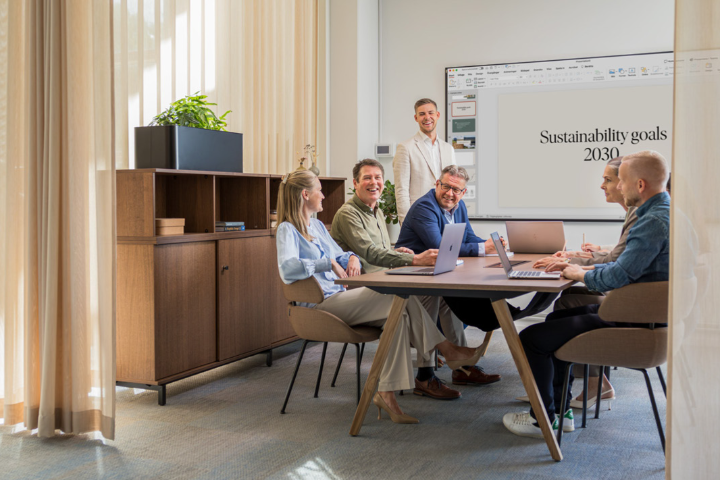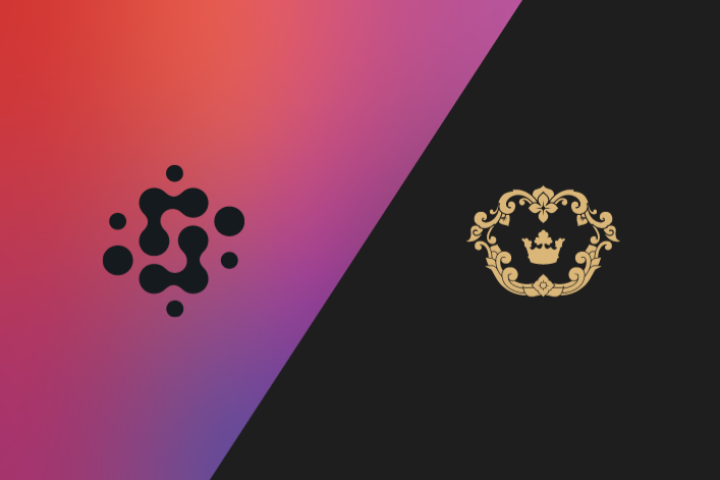
Why smart workplace design is the ultimate productivity hack
24 April 2025
In modern office spaces, where creativity meets efficiency, design plays a crucial role. For SCC UK Patron Kinnarps, this principle has guided their journey from the very beginning. Founded by Evy and Jarl Andersson in the Swedish village of Kinnarp in 1942, the company has grown from a carpenter’s shop to a global powerhouse in 40 countries. Yet, their passion of improving workspaces remains the same as then, guided by Founder Jarl’s belief that ‘anything, however good, can always be improved a little.’
At the centre of Kinnarps’ philosophy is ‘holistic ergonomics’, a concept born from Jarl’s belief in constant improvement. Holistic ergonomics addresses the interplay between physical space, organisational culture, and social environment. “People are the single most important asset to an organisation. Creating an environment that makes them feel welcome, secure, inspired, and motivated will ultimately allow them to be their best at work,” says Fredrik Bergsten, Managing Director at Kinnarps UK.
Thoughtful workplace design goes beyond functionality. In fact, it can even boost organisational culture. A well-designed space, informed by the principles of holistic ergonomics, can lead to increased well-being, fewer sick days, higher efficiency, and even greater success in attracting top talent.
Fredriks three essential ingredients in thoughtful workplace design:
Encourage movement
Spaces should inspire and accommodate physical activity, benefiting both physical and mental health.
Minimise distractions
From noise to poor lighting, negative distractions hinder productivity and focus.
A positive working climate
Reducing stress and promoting collaboration strengthens workflows and boosts employee morale.
Designing for performance and culture
The way workspaces are designed has a direct impact on how people feel and perform. “When you create a space based on people’s needs, employees feel better, and that enables them to perform better,” Fredrik explains. Yet, many organisations miss the mark by designing spaces based on assumptions or trends rather than genuine needs.
Research shows that it takes an average of 22 minutes to regain focus after an interruption — a costly setback for productivity. This challenges the common myth that employees focus better when working from home. In reality, household distractions like laundry, cleaning, and other tasks one think could be done while working from home can often disrupt concentration and set back the productivity.
Sustainability circularity in action
In today’s climate-conscious world, a sustainable workplace isW a no-brainer. Kinnarps has long embraced sustainable practices and prefers to talk about ‘sustainable circularity’ as a term that reflects a holistic approach. Fredrik emphasises: “Circularity is often spoken about, and in most cases it’s positive. However, just because something is circular, it doesn’t necessarily mean that it’s sustainable. At Kinnarps we believe in sustainable circularity, and we see three keys to consider when designing with it in mind.”
Hybrid challenges and the future of workspaces
Modern offices are full of distractions. Open-plan interruptions and insufficient privacy are hurdles that can potentially stifle productivity. Hybrid work adds another layer of complexity, demanding spaces that cater to diverse needs. The key is planning based on actual employee needs rather than assumptions: “Fundamentally, our needs haven’t changed,” says Fredrik. “The workplace should still be designed to allow employees to perform their best.”
Technology is another factor transforming workplace design in 2025, potentially enhancing employee well-being and efficiency. The pandemic accelerated this shift, introducing tools that support hybrid work and virtual collaboration. Yet challenges remain. “Today, 50% of meetings are typically hybrid or digital,” says Fredrik “The challenge is making sure that everyone is being seen and heard correctly.
Three key consideration when desiging with sustainable circularity in mind
Make conscious choices
Begin projects by understanding the needs and define a clear vision.
Create flexible solutions
Design for daily, short-term, and long-term adaptability to ensure longevity.
Choose high quality
Durable products made for repair, washing, and upgrades extend their lifespan, benefiting both the environment and the customer’s budget.
Looking ahead, technology will provide even greater insights into organisational needs, driving the evolution of workspaces. Tools like virtual assistants and meaningful data analytics are already helping to create environments that support employee well-being.
Designing for collaboration
The layout of a workspace profoundly influences team dynamics. Collaboration — both within and cross functions — requires flexible, thoughtfully designed spaces. Simple solutions, such as mobile screens, whiteboards, and strategic seating arrangements, can optimise efficiency.
“We’ve seen increased demand for working lounges,” Fredrik notes. These hubs encourage spontaneous interactions and cross-departmental connections. Even elements like colour play a role: energising yellows spark creativity, while calming blues promote focus.
Recognising red flags
How can you tell if a workspace isn’t working, then? “Increased sick days, lower efficiency, and declining morale are clear signs,” Fredrik warns. Post-pandemic, empty offices are a red flag many organisations are grappling with. But thoughtful design, with the employee’s needs in mind, can help fix these issues and revitalise spaces.
Bonus question:
What’s the one thing from a traditional Swedish office that every workplace around the world should adopt?
“The Fika break. Our brains are not designed to focus for 8-10 hours a day, so taking a Fika break will not only give your brain a respite and become more efficient, but it will also allow you to learn more about your colleagues in an informal manner. I’m also convinced that many of the best ideas or problem solving comes as a result of a Fika break.“



